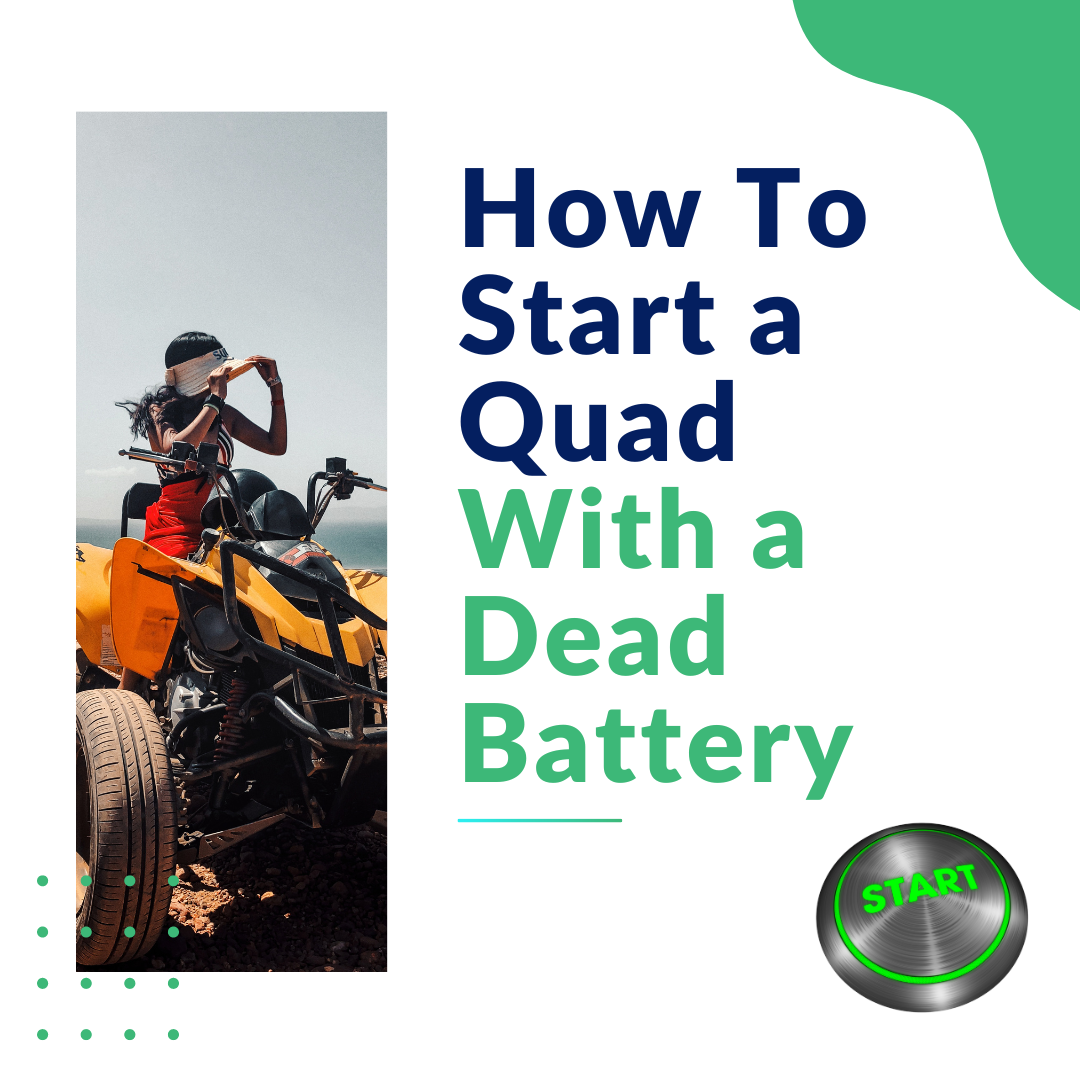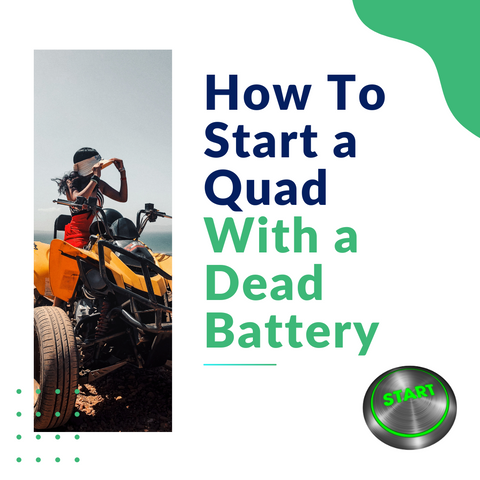Published: 4.7.23
Updated: March 24, 2025
Ready for a quad ride but stuck with a dead battery?
Don’t let it ruin your day—this guide shows how to start your quad fast.
Explore steps, tools, and safety tips to get back on the trail.
Step 1: Understanding a Dead Battery
What’s an ATV Battery?
A dead battery means no power to start your quad’s engine or run its accessories.
Risks of Running Without a Battery
Forcing a start without a working battery is risky.
It can fry your quad’s electrical system—no battery means no buffer against voltage spikes.
Essential Tools for Quad Battery Maintenance
| Tool | Purpose |
|---|---|
| Jumper Cables | Jump-start your quad using another vehicle’s battery (4-6 gauge, 10-15 ft). |
| Portable Charger | Revive a dead battery anywhere with a 12V-compatible charger. |
| Multimeter | Diagnose battery issues by checking voltage (aim for 12V+). |
Need a kids’ petrol quad? Check our collection!
Step 2: Your Options to Start
Jump-Starting Your Quad
Jump-start using another quad or car battery with the right cables.
Steps:
- Turn off both engines.
- Red cable to dead battery’s positive terminal.
- Red cable to good battery’s positive terminal.
- Black cable to good battery’s negative terminal.
- Black cable to quad frame (not battery negative).
Caution: Avoid sparks—never connect black to the dead battery’s negative.
Run the good vehicle, then start your quad. Let it charge for 15 minutes.
Troubleshooting Jump-Start Issues

If it fails, check connections or test the battery—see this guide for pull-start tips.
Bump-Starting Your Quad
No battery nearby? Bump-start it with momentum.
Steps:
- Set quad to neutral, ignition ON, kill switch RUN.
- Push to 5-10 mph (downhill helps).
- Pull clutch, shift to second gear, then release clutch fast.
Note: Won’t work on automatics. Wear gear and limit tries.
Using a Battery Charger

A charger is the safest fix—use a 12V smart charger.
Steps: Connect red to positive, black to negative, charge fully, then reinstall.
Tip: Check this guide for charging issues.
Step 3: Safety First

Wear gloves, avoid sparks, and keep the quad stable.
Step 4: Battery Maintenance

Charge regularly, clean terminals, and replace after 3-5 years.
Test with a multimeter—below 12V means discharged; if it won’t hold, it’s dead.
Preventive Maintenance Tips
| Tip | Action |
|---|---|
| Charge Regularly | Use a smart charger every 2 months. |
| Clean Terminals | Brush with baking soda solution. |
| Store Properly | Keep cool, dry, and disconnected. |
Common Mistakes to Avoid

Don’t use wrong cables, skip grounding, or overcharge—check polarity and wear gear.
Summary
A dead battery won’t stop you with these tricks—jump, bump, or charge it right.
Stay safe and keep riding!
Buying a kids’ quad? See our Ultimate Guide.
FAQs
How do I jump-start a quad?
Connect red to positive terminals, black to good battery negative and quad frame, then start both vehicles.
Can I bump-start a quad?
Yes, push to 5-10 mph, shift to second gear, and release clutch—if it has a manual transmission.
Is it safe to use a car battery to jump-start a quad?
Yes, but proceed carefully—ensure the car engine is off during connection to avoid voltage spikes, and use 4-6 gauge cables.
How long should I charge a quad battery with a charger?
It depends on the charger, but a 12V smart charger typically takes 4-6 hours for a full charge—check the battery voltage to confirm.
What if my quad still won’t start after trying these methods?
Check for deeper issues like a faulty battery, starter, or charging system—consider a professional inspection if the battery tests dead.







Share:
Can You Buy A Motorcycle Without A License in 2025?
How Fast Do Mopeds Of 50cc, 100cc, 125cc & 150cc Go?